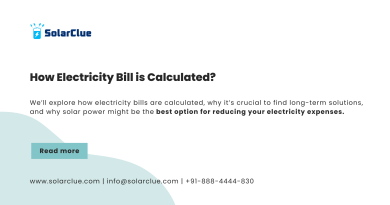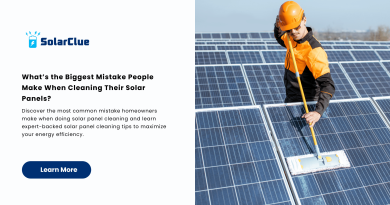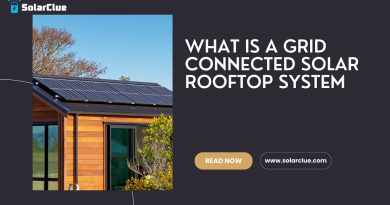How To Choose Best Solar Panels?
Choosing the right solar panels is a crucial step in maximizing the benefits of your solar energy system. With numerous factors to consider, such as efficiency, wattage, durability, and cost, this guide will help you navigate the selection process and make an informed decision that aligns with your energy needs and budget.
Table of Contents
- 1 Efficiency and Wattage: Understanding the Key Metrics
- 1.1 Comparing Different Solar Panel Technologies
- 1.1.1 Warranty and Product Longevity
- 1.1.2 Cost Analysis and Return on Investment
- 1.1.3 Evaluating Solar Panel Brands and Manufacturers
- 1.1.4 Considering Roof Space and Orientation
- 1.1.5 Government Incentives and Rebates
- 1.1.6 The Role of Battery Storage
- 1.1.7 Environmental Impact and Sustainability
- 1.1.8 Future Trends in Solar Panel Technology
- 1.1.9 Case Studies of Successful Solar Panel Installations
- 1.2 Frequently Asked Questions (FAQs)
- 1.3
- 1.1 Comparing Different Solar Panel Technologies
Efficiency and Wattage: Understanding the Key Metrics
When selecting solar panels, two of the most important metrics to consider are efficiency and wattage:
| Metric | Description |
|---|---|
| Efficiency | The percentage of sunlight that the panel can convert into usable electricity. Higher efficiency panels produce more electricity per square meter. |
| Wattage | The amount of power (in watts) that a panel can produce under standard test conditions. Higher wattage panels generate more electricity. |
Example: A 400W panel with 20% efficiency will produce more power than a 300W panel with 18% efficiency, but the former may be more expensive.
Comparing Different Solar Panel Technologies
Solar panels come in different types, each with its own advantages and disadvantages:
| Type | Description | Pros | Cons |
|---|---|---|---|
| Monocrystalline | Made from a single crystal structure, typically more efficient. | High efficiency, long lifespan. | Higher cost. |
| Polycrystalline | Made from multiple crystal fragments, slightly less efficient. | Lower cost, decent efficiency. | Larger size for the same output, slightly lower efficiency. |
| Thin-Film | Made from layers of photovoltaic material, flexible and lightweight. | Lightweight, can be installed on varied surfaces. | Lower efficiency, more space needed. |
Warranty and Product Longevity
The warranty and longevity of solar panels are critical considerations:
- Product Warranty: Typically covers manufacturing defects and can range from 10 to 25 years.
- Performance Warranty: Guarantees that the panel will retain a certain percentage of its original efficiency over time, often 80-90% after 25 years.
- Durability: Panels should withstand environmental factors like wind, hail, and temperature fluctuations.
Cost Analysis and Return on Investment
When evaluating the cost of solar panels, consider the following:
- Upfront Cost: The initial investment required for purchasing and installing the panels.
- Cost per Watt: A useful metric to compare different panels. Divide the total cost by the total wattage.
- Return on Investment (ROI): Calculate the payback period by dividing the total system cost by annual savings on electricity bills.
Example:
- System Cost: ₹2,00,000
- Annual Savings: ₹30,000
- Payback Period: ₹2,00,000₹30,000=6.67 years
Evaluating Solar Panel Brands and Manufacturers
Selecting a reputable manufacturer is essential for ensuring product quality and warranty support:
| Factor | Description |
|---|---|
| Brand Reputation | Research customer reviews, ratings, and industry awards. |
| Product Range | Consider manufacturers that offer a wide range of products, including high-efficiency panels. |
| After-Sales Support | Check the availability and responsiveness of customer service and warranty claims. |
| Manufacturing Standards | Look for certifications like ISO 9001 for quality management and IEC standards for performance. |
Considering Roof Space and Orientation
The available roof space and its orientation play a significant role in determining the best solar panels for your needs:
- Roof Space: Limited space may necessitate the use of higher efficiency panels to meet energy needs.
- Orientation: South-facing roofs (in the northern hemisphere) are ideal for maximizing sunlight exposure.
- Tilt Angle: Panels should be installed at an angle that matches your location’s latitude for optimal performance.
Government Incentives and Rebates
Government incentives can significantly reduce the cost of solar panels:
| Incentive | Details |
|---|---|
| Central Financial Assistance (CFA) | Up to 40% subsidy for rooftop solar systems up to 3 kW. |
| State-Level Rebates | Additional rebates or incentives may be available depending on your state. |
| Net Metering | Allows you to sell excess electricity back to the grid, improving ROI. |
The Role of Battery Storage
Battery storage can enhance the value of your solar panel system by storing excess energy for use during non-sunny periods:
- Energy Independence: Batteries allow for energy use during the night or power outages.
- System Size Considerations: If incorporating batteries, your solar system might need to be larger to generate enough power for both immediate use and storage.
- Cost Impact: Batteries add to the upfront cost but can increase savings and energy security in the long run.
Environmental Impact and Sustainability
The environmental impact of solar panels is an important consideration:
- Manufacturing Process: Consider the carbon footprint of the panel’s production. Some manufacturers focus on sustainable practices.
- Recyclability: Look for panels made from materials that can be easily recycled at the end of their lifespan.
- Energy Payback Time: The time it takes for the panel to generate the energy equivalent to its production footprint.
Future Trends in Solar Panel Technology
The solar industry is continually evolving, with several emerging trends:
- Bifacial Panels: Capture sunlight from both sides, increasing energy production.
- Building-Integrated Photovoltaics (BIPV): Solar panels integrated into building materials, such as roof tiles.
- Higher Efficiency Panels: Ongoing research is pushing panel efficiency beyond 25%.
- Smart Panels: Integration of AI and IoT for real-time monitoring and optimization.
Case Studies of Successful Solar Panel Installations
Learning from real-world examples can provide valuable insights:
- Case Study 1: A homeowner in Gujarat installed high-efficiency monocrystalline panels on a small roof, achieving full energy independence within 5 years.
- Case Study 2: A commercial building in Tamil Nadu used bifacial panels to maximize energy production in a limited space, leading to a significant reduction in energy costs.
Frequently Asked Questions (FAQs)
1: How do I choose the best solar panels for my home?
A: Consider factors like efficiency, wattage, cost, and available roof space. Evaluate different panel types (monocrystalline, polycrystalline, thin-film) based on your specific needs.
2: What is the significance of a solar panel’s efficiency?
A: Efficiency determines how much sunlight the panel can convert into electricity. Higher efficiency panels produce more energy in less space.
3: How important is the warranty when selecting solar panels?
A: A robust warranty is crucial as it protects your investment and ensures long-term performance. Look for both product and performance warranties.
4: What should I consider when evaluating solar panel manufacturers?
A: Consider the manufacturer’s reputation, product range, after-sales support, and adherence to quality standards.
5: How can government incentives reduce the cost of solar panels?
A: Incentives like the Central Financial Assistance (CFA) and state-level rebates can significantly lower the upfront cost of installation.
6: Is battery storage necessary for a solar panel system?
A: While not necessary, battery storage can enhance energy independence and provide backup power, especially in areas with unreliable grid supply.
7: What are the environmental benefits of choosing solar panels?
A: Solar panels reduce reliance on fossil fuels, lower carbon emissions, and can be made from recyclable materials, contributing to sustainability.
8: What future trends should I consider when choosing solar panels?
A: Look for emerging technologies like bifacial panels, BIPV, and smart panels, which offer higher efficiency and better integration with modern homes.
Selecting the right solar panels requires a comprehensive understanding of your energy needs, available space, and budget. By considering factors like efficiency, cost, durability, and future trends, you can make an informed decision that maximizes the benefits of your solar investment.
Here at SolarClue®, we offer a smart, practical, and “beautiful” solution. You will be answered for all the questions related to Solar.
We provide all kinds of brands that are the Best Solar panels in India.
If you are the one who is planning for the solar power system. Don’t hesitate to contact our team!
Looking forward to empowering you with solar energy, just like hundreds of our other clients!



